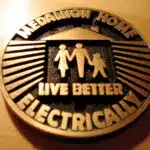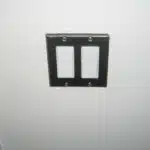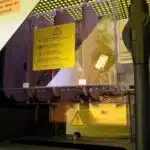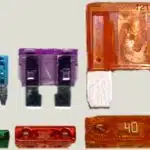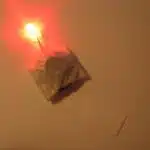As a professional electrician, it is crucial to know how to remove a recessed light. Recessed lights are a popular choice for homeowners due to their sleek design and ability to provide ample lighting without taking up valuable ceiling space. However, there may come a time when you need to remove a recessed light, whether it be for replacement or renovation purposes.
Removing a recessed light may seem like a daunting task, but with the right tools and techniques, it can be done efficiently and safely. In this article, we will discuss the steps involved in removing a recessed light and provide tips on how to do it properly. Whether you are an experienced electrician or a homeowner looking to take on some DIY projects, this guide will help you serve others by providing them with the knowledge they need to safely remove their own recessed lights.
Understanding The Different Types Of Recessed Lights
As an electrician, it is important to understand the different types of recessed lights that exist. Recessed lights are light fixtures that are installed in a hollow opening in the ceiling. They offer a sleek and modern look and can be used to provide ambient lighting or highlight specific areas of a room. There are two main types of bulbs used for recessed lights: incandescent and LED.
Incandescent bulbs have been traditionally used in recessed lights, but they are becoming less popular due to their inefficiency. LED bulbs, on the other hand, are much more energy-efficient and have a longer lifespan. They also emit less heat than incandescent bulbs. When choosing which type of bulb to use, it is important to consider both your budget and your energy usage.
Another important factor when installing recessed lights is understanding the difference between IC (insulation contact) and non-IC rated fixtures. IC rated fixtures can come into contact with insulation without causing any safety hazards or fire risks, while non-IC rated fixtures cannot. It is crucial to ensure that you select the correct fixture for your particular installation to avoid any potential safety issues down the line.
Understanding these basic concepts will help you make informed decisions when selecting which type of recessed light fixture best suits your needs. Now that we’ve covered the basics of bulb types and ratings, let’s move on to discussing the tools required for removing a recessed light.
Tools Required For Removing A Recessed Light
A screwdriver is necessary to remove the screws attaching the trim to the ceiling. Pliers may be required to disconnect any wiring connecting the recessed light to the power source. A ladder should be used to safely access the recessed light. If the bulb is difficult to remove, a bulb extractor and safety goggles should be used.
Screwdriver
When it comes to removing a recessed light, having the right tools is essential for a successful project. One of the most crucial tools you will need for this task is a screwdriver. There are different types of screwdrivers that you can use depending on the type of screws your recessed light has.
To ensure proper screwdriver usage techniques, it’s important to choose the right type and size of screwdriver for the job. For instance, if your recessed light has Phillips screws, then you will need a Phillips head screwdriver. On the other hand, if it has flathead screws, then you should use a flathead screwdriver instead. Make sure that you select a screwdriver that matches your screws’ size precisely to prevent damaging your fixture.
Lastly, remember to apply pressure only when turning the screwdriver while using it. Applying too much force could result in stripping or breaking your screws and ultimately damage your recessed light fixture. Always maintain steady pressure and turn slowly until the screws are fully loosened or tightened before removing them from your fixture. By following these proper usage techniques, you’ll be able to remove your recessed light with ease using a suitable screwdriver.
Pliers
When it comes to removing a recessed light, having the right tools is crucial for a successful project. In addition to screwdrivers, pliers are also essential tools that an electrician must have in their toolbox. Pliers can be useful when you need to grip and turn screws or nuts that cannot be reached by your fingers.
Using pliers: tips and tricks for removing a recessed light involve choosing the right type of pliers for specific tasks. For instance, if you need to remove stripped screws, locking pliers or vice grip pliers can provide the necessary grip needed to turn them out. Needle-nose pliers are ideal for reaching into tight spaces and holding small wires or screws while making repairs.
However, common mistakes to avoid when using pliers for removing a recessed light include using too much force on stripped screws, which could damage the fixture’s threads. It’s also essential not to use regular pliers on electrical wires as they may cut the insulation surrounding them, leading to an electrical shock hazard. By following these tips and tricks and avoiding common mistakes, you’ll find that using pliers is an effective way of removing a recessed light without causing any damage.
Turning Off The Power To The Light Fixture
To safely turn off the power to a recessed light fixture, it is crucial to follow some essential steps. Before removing the fixture, you must switch off the power supply at the main circuit breaker. This will ensure that there is no electrical current flowing through wires or other components that could cause injury or damage.
Once you have switched off the power supply, you should double-check whether it has been turned off correctly. To do this, use a non-contact voltage tester to check if there is any voltage present in the wires. If your tester detects voltage, then you should immediately stop work and call a professional electrician to help you safely disconnect the power supply.
If your tester does not detect any voltage, then it is safe to proceed with removing the recessed light fixture. However, you must continue to follow all safety precautions and wear protective gear such as gloves and safety goggles throughout the process. By taking these necessary precautions before removing a recessed light fixture, you can ensure that your work is done safely and efficiently.
Transition: Now that we have taken all necessary steps to ensure that there is no electrical current flowing through wires or other components of our recessed light fixture, we can move on to removing the trim and bulb from our fixture.
Removing The Trim And Bulb
Next, you need to remove the trim and bulb from the recessed light fixture. The trim is the visible part of the fixture that surrounds the bulb, while the bulb itself provides the light. Here’s how to remove them:
Turn off the power supply: Before you start removing any components, ensure that there is no electricity running through your home’s electrical system. To do this, switch off the circuit breaker or fuse that supplies power to your recessed lighting.
Remove the trim: Once you’ve switched off the power supply, put on a pair of gloves and gently twist or pull down on the trim until it pops free from its clips or springs. Be careful not to damage any wires or other components as you do this.
Take out the bulb: With the trim removed, reach up into the fixture and gently twist or pull out the bulb from its socket. If it’s stuck, use a pair of pliers to grip it firmly and wiggle it back and forth until it comes loose.
If you encounter any issues when replacing components or troubleshooting problems with your recessed lighting, consult a professional electrician for assistance. They can help diagnose problems like faulty wiring, broken fixtures, or damaged bulbs and recommend solutions that are safe and effective.
Moving on to removing the housing…
Removing The Housing
- The first step of removing any recessed light fixture is to turn off the power to the area where the fixture is located.
- Ensure that the power is off at the main circuit breaker before proceeding with the removal process.
- Once the power is off, the next step is to remove the existing recessed light fixture by unscrewing the trim and disconnecting the wires.
- Finally, the housing should be removed by unscrewing any mounting screws, and carefully removing it from the ceiling.
Turning Off Power
Turning off power is a crucial step when removing a recessed light. This ensures that you don’t get electrocuted while working on it. Before turning off the power, make sure to turn off the switch that controls the light. Afterward, locate the circuit breaker box and turn off the breaker that supplies electricity to the light. You can verify if the power is indeed turned off by using a non-contact voltage tester.
Common mistakes to avoid when turning off power for removing a recessed light include not switching off the right breaker or forgetting to use a voltage tester. It’s important to know which breaker controls your recessed light since shutting down an incorrect one may cause damage to other electrical devices in your home. Using a voltage tester can also prevent accidents from happening since it checks if there’s still electricity flowing through your device.
In conclusion, turning off power is a crucial safety step before removing a recessed light. By following these guidelines on how to safely turn off power and avoiding common mistakes, you can ensure that your work area is safe from electrocution hazards. Remember always to prioritize safety above all else when dealing with electrical devices at home.
Removing The Fixture
When it comes to removing a recessed light, it’s essential to follow safety precautions. Removing the fixture requires caution since you will be working with electrical components that can be hazardous if mishandled. Before proceeding with the removal process, ensure that you have turned off the power supply and tested for any remaining currents.
Once you have confirmed that there is no electricity flowing through your device, it’s time to remove the fixture. Begin by unscrewing any screws or fasteners that are holding the fixture in place. If the fixture appears stuck, gently wiggle it back and forth until it loosens up. Avoid yanking or pulling on the wires since this can damage them and cause electrical issues.
When removing the fixture, some common mistakes should be avoided. These include not wearing gloves when handling wires and not labeling them correctly. It’s also crucial to avoid using excessive force when removing fixtures as this can lead to other issues such as damaging surrounding surfaces or breaking parts of the fixture. By following safety precautions and avoiding common mistakes, you can safely remove your recessed light without endangering yourself or others around you.
Disconnecting The Wiring
According to a report by the National Fire Protection Association, electrical malfunctions caused more than 45,000 home fires in 2017 alone. This statistic highlights the importance of understanding electrical safety when carrying out any electrical work, including removing a recessed light. Before proceeding with the disconnection of wiring, ensure that you have turned off the power supply to the light fixture at the circuit breaker.
Once you have confirmed that there is no risk of electrocution, use wire cutters to remove the connections between the wires and the light fixture. It is important to ensure that you use proper wire cutters as using other tools such as pliers or scissors can result in damage to the wires or even cause an electrical shock. Start by cutting any visible connections between the wires and then proceed to strip back any insulation from the ends of these wires.
After stripping back insulation, insert each exposed wire into a wire connector and twist it clockwise until it is snug in place. You can also wrap electrical tape around each connector for added safety. With all wiring disconnected and safely secured, move on to removing any mounting screws or clips holding up your old recessed light fixture.
To ensure proper disposal of your old light fixture, make sure to follow local regulations regarding waste management and recycling of electronic materials. Many cities have designated drop-off locations where you can dispose of your old fixtures safely and responsibly. By properly disposing of your old fixture, you not only help protect the environment but also contribute towards ensuring safety for everyone around you.
Ensuring Proper Disposal Of The Old Light Fixture
Proper disposal of the old light fixture is an important step in the process of removing a recessed light. Failing to dispose of it properly can have negative consequences for the environment and your community. It is critical that you take this step seriously and ensure that your old light fixture is disposed of correctly.
One way to ensure proper disposal is to contact your local waste management authority. They will be able to guide you on how to dispose of your old fixture safely and in compliance with local regulations. You may also consider donating the fixture if it is still functional, or recycling it if possible.
It’s important to remember that improper disposal of electronic waste can have harmful effects on both human health and the environment. The toxic materials found in many electronic components can leach into soil and water systems, causing damage to natural ecosystems and wildlife. By taking steps to properly dispose of your old light fixture, you are doing your part to protect both people and the planet from these negative impacts.
As we wrap up this section on proper disposal, it’s important to take note that disposing of an old light fixture should not be taken lightly. Properly disposing of electronic waste such as a recessed light ensures that we minimize environmental impact while also safeguarding public health. With this out of the way, let us now proceed with preparing for installation of a new light fixture.
Preparing For Installation Of A New Light Fixture
Before installing a new light fixture, it is important to choose an appropriate fixture that will meet your needs and complement the space. When selecting a new fixture, consider factors such as the size of the room, the amount of natural light, and the intended use of the space. For example, a dimmable fixture may be ideal for a living room where you want to create a cozy atmosphere, while a bright fixture may be more appropriate for a workspace.
Common mistakes to avoid during installation include failing to turn off power to the circuit before beginning work and mismatching wire colors. It is also important to ensure that the junction box can support the weight of your new fixture. If in doubt about any aspect of installation or selection of fixtures, consult with a professional electrician.
In order to prepare for installation, gather all necessary tools and hardware such as wire connectors, electrical tape, and a screwdriver. Additionally, ensure that you have chosen an appropriate replacement bulb for your new fixture. With proper preparation and attention to detail, installation of your new light fixture can be completed safely and efficiently.
When choosing an appropriate recessed light fixture for your space, consider elements such as color temperature and beam angle. A lower color temperature can create a warmer ambiance in areas such as bedrooms or dining rooms while higher temperatures may be better suited for workspaces or kitchens. The beam angle determines how focused or dispersed the light will be; narrow angles are better suited for highlighting specific objects while wider angles are better suited for general lighting purposes.
Selecting A New Recessed Light Fixture
After preparing the installation of a new light fixture, it’s time to remove the old one. Removing a recessed light requires some basic tools such as screwdrivers and pliers. First, turn off the power supply to avoid any accidents. Then, remove the bulb and the trim by unscrewing them. Afterward, locate the metal springs that hold the housing in place and pull them down gently. Finally, disconnect the wiring connections and remove the housing from the ceiling.
Choosing styles for a new recessed light fixture is an exciting process since there are many options available in the market nowadays. One can choose between different shapes, sizes, colors, and materials that match their taste and interior design. Furthermore, comparing prices is essential because it helps you find affordable options without sacrificing quality or aesthetics. However, keep in mind that cheaper fixtures may have lower durability or energy efficiency.
Installing the housing for a new fixture requires attention to detail and accuracy to ensure proper functionality and safety. Firstly, make sure to measure accurately where to cut the hole for your new fixture using a drill saw attachment or hole cutter. Secondly, make sure not to damage any electrical wires during installation by ensuring they are tucked away safely before installing your new fixture’s housing. Finally, connect all wiring correctly according to your manufacturer’s instructions before securing your new recessed light fixture into place with screws or brackets provided by your manufacturer’s instructions.
Installing The Housing For The New Fixture
Now that you have removed the recessed light, it’s time to install the housing for the new fixture. Follow these steps to ensure proper installation:
- Begin by removing the existing mounting bracket from the old fixture and set it aside.
- Next, take the new housing and attach the mounting bracket to it using screws provided in the package.
- Once the mounting bracket is securely attached, insert the housing into the hole in your ceiling and use a screwdriver to tighten any screws or clips that hold it in place.
After installing the mounting bracket, it’s time to connect your electrical wiring. Here are some tips for safe and efficient wiring:
- Always turn off power at the circuit breaker before working with electrical wires.
- Carefully read instructions provided with your new fixture before beginning installation.
- Match up wire colors: black to black, white to white, green or bare copper wire to green or bare copper wire.
With these steps completed, you’re ready to move on to wiring your new fixture and enjoying your updated lighting!
Wiring The New Fixture
When wiring a new fixture, there are some important tips to keep in mind. First and foremost, always make sure the power is turned off before beginning any electrical work. This can be done by turning off the circuit breaker or removing the fuse that powers the light. Additionally, it is crucial to carefully read and follow the manufacturer’s instructions for both the new fixture and any wiring components.
One common mistake when wiring a new fixture is not properly connecting the wires. It is important to match up the wires from the new fixture with those from your electrical box, which may require stripping some of the insulation off of each wire to expose enough of the metal for proper connection. Another mistake is overloading a circuit by installing too many fixtures on it. Be sure to check your overall wattage needs and distribute them across multiple circuits as needed.
By following these wiring tips and avoiding common mistakes, you can ensure a safe and successful installation of your new fixture. In the next section, we will cover how to attach the trim and bulb to complete your recessed lighting project seamlessly.
Attaching The Trim And Bulb
Now that the wiring is complete, it’s time to remove the old recessed light fixture. This process requires careful attention and precision to avoid damaging the ceiling or causing injury. Here are some steps to follow when removing a recessed light:
Turn off the power supply: Before attempting any electrical work, turn off the circuit breaker or switch that powers the existing recessed light. This will prevent electrical shock or damage to your new fixture.
Remove the trim: The trim is the visible portion of your recessed light that covers the housing. Use a flathead screwdriver to gently pry away any clips or springs holding the trim in place. Be sure to keep track of any screws or fasteners that may be holding it down.
Remove the bulb: Once you’ve removed the trim, you can access and remove the bulb. Gently twist counterclockwise to release it from its socket. If it’s stuck, use a pair of rubber gloves for added grip without risking shattered glass.
Attaching Trim: Common Mistakes When attaching new trim to your recessed lighting fixtures, there are a few common mistakes to avoid:
- Choosing improper sized trims.
- Forgetting about safety clips.
- Using too much force during installation.
Tips for a Secure Fit To ensure your new trim fits securely in place and looks great, try these tips:
- Measure twice before cutting once.
- Clean up any debris from previous installation with a vacuum cleaner or damp cloth.
- Consider using an adhesive like silicone caulking around edges of new trims for added support.
Bulb Replacement: Choosing The Right Bulb When replacing bulbs in your recessed lighting fixtures, choose ones with appropriate wattage ratings and types (such as incandescent vs LED) based on manufacturer recommendations.
DIY vs Professional Installation If you’re not comfortable working with electricity or installing light fixtures on your own, don’t hesitate to call a professional electrician. They’ll ensure the job is done safely and correctly.
With the old fixture removed, it’s time to test your new light fixture. But before doing so, make sure all wiring connections are tight and secure. Once you’ve confirmed that everything is in order, turn on the power supply and enjoy your newly installed recessed light fixture.
Testing The New Light Fixture
- Before testing the new light fixture, it is important to check the voltage of the circuit to ensure that it is within the recommended range for the fixture.
- Once voltage is within the recommended range, it is necessary to connect the wiring of the new fixture to the circuit and test the connections to ensure a secure fit.
- The wiring connections should be checked to ensure that the wires are tightly secured to the fixture and the circuit.
- If any of the wiring connections are loose or disconnected, they need to be tightened or reconnected in order for the fixture to function properly.
Checking Voltage
Before installing the new light fixture, it is crucial to check the voltage of the existing wiring. This step ensures safety and prevents any potential electrical hazards during the installation process. As a professional electrician, I recommend measuring resistance and testing continuity to ensure that the power supply is off.
To measure resistance, use a digital multimeter and set it to the resistance or ohms mode. Touch one probe to the positive wire and the other probe to the negative wire. If there is no reading on the multimeter, then there is no continuity, which means there is no power supply. However, if there is a reading, then there is continuity and electricity running through those wires.
Testing continuity involves using a similar method as measuring resistance but with an additional step. Instead of touching both probes on each wire simultaneously, touch one probe on one end of a wire and touch the other probe on another end of that same wire. If there is continuity between both ends of the wire, then electricity can flow through it. By following these steps in checking voltage, we can ensure that we are working safely when installing our new light fixture.
Testing Wiring Connections
After checking the voltage of the existing wiring, the next step is to test the wiring connections. Checking connections is crucial to ensure that there are no loose or damaged wires that may cause issues with the new light fixture. As a professional electrician, I recommend troubleshooting any issues before proceeding with the installation process.
To check wiring connections, start by turning off the power supply and removing the old light fixture. Carefully examine each wire and connection point for any signs of damage or wear. Use a wire stripper to remove any damaged insulation from wires and reconnect them securely.
Once all connections have been checked and repaired, it’s essential to test them before installing the new fixture. Turn on the power supply and use a non-contact voltage tester to check if electricity is flowing through each wire safely. If there are no issues, then it’s safe to proceed with installing your new light fixture. By following these steps in testing wiring connections, we can ensure that our new light fixture will function correctly and safely for years to come.
Tips For Safe And Efficient Removal
When removing recessed lights, it is important to take the necessary safety precautions to avoid accidents. Before starting, make sure that the power supply is turned off and the light fixture is not hot. Additionally, wear protective gear such as gloves and goggles to protect yourself from any debris that may fall during the removal process.
Common mistakes when removing recessed lights include using too much force or pulling on the wires. This can damage the ceiling or wiring, leading to costly repairs. To avoid this, gently twist and pull on the fixture until it comes loose. If you encounter any resistance, stop immediately and assess the situation before proceeding.
Overall, it is crucial to be cautious when removing recessed lights and follow proper safety procedures to avoid injury or damage. By taking these precautions and avoiding common mistakes, you can efficiently remove your recessed light without any complications.
Moving forward, if you have complex electrical projects or are unsure about how to proceed with your installation or removal, it may be best to hire a professional electrician. They have the knowledge and experience needed to handle intricate projects safely and effectively. Don’t hesitate to reach out for help when needed – it’s always better to be safe than sorry.
Hiring A Professional Electrician For Complex Projects
When it comes to electrical projects, sometimes it’s best to hire a professional electrician. While some tasks such as changing a light bulb or replacing an outlet can be done by the average homeowner, more complex projects require the expertise of a trained professional. Not only do electricians have the knowledge and training to complete complex projects safely and efficiently, they also have specialized tools and equipment that most homeowners don’t possess.
One major consideration when hiring an electrician is their rates. Electrician rates vary depending on factors such as location, experience, and project complexity. It’s important to get quotes from multiple electricians before making a decision. However, it’s also important not to simply choose the cheapest option without considering other factors such as reviews or credentials.
Another reason to consider hiring a professional for complex electrical projects is safety. DIY electrical work can be extremely dangerous if proper precautions aren’t taken. Electricians are trained in safety protocols and have the necessary equipment and tools to ensure that the project is completed safely without risk of injury or damage to property. Ultimately, investing in a professional electrician can save time, money, and even lives in the long run.
In summary, while DIY electrical work may seem like an attractive option for saving money on home improvement projects, more complex tasks should be left to professionals with the necessary training and expertise. When choosing an electrician for your project, take into account their rates along with other factors such as safety protocols and reviews from previous clients. By doing so, you’ll be able to ensure that your project is completed safely and efficiently without risking damage or injury due to lack of experience or knowledge in handling electricity.
Conclusion
As a professional electrician, it is important to understand the different types of recessed lights and the tools required for their removal. Before beginning any project, always make sure to turn off the power to the light fixture and follow safety precautions.
To remove a recessed light, start by removing the trim and bulb. Then, carefully remove the housing and disconnect any wires. Once the new light fixture is attached and tested, reattach the trim and bulb.
Remember that complex projects should be left to a professional electrician. With the proper knowledge and expertise, electrical work can be done safely and efficiently. By following these steps and seeking professional help when needed, you can successfully remove a recessed light in your home or office.
Image Credits




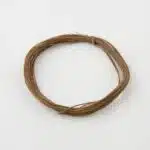
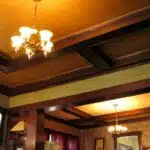

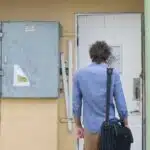


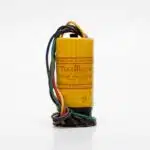
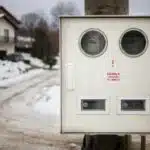
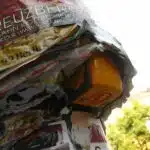

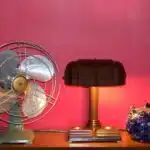
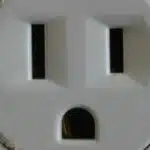
![How To Replace A Single-Pole Wall Switch 16 '... All in all it's just another [switch] in the wall.' ...](https://green-life.blog/wp-content/uploads/2023/05/17xmP5qMtVjq-150x150.jpg.webp)
